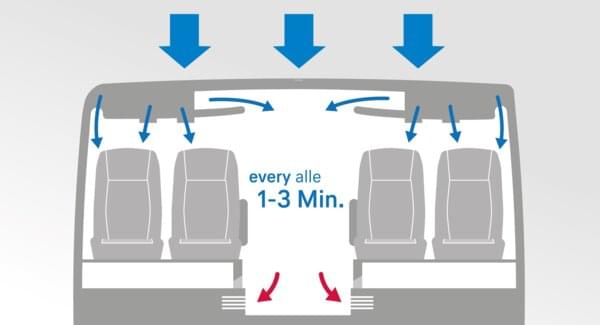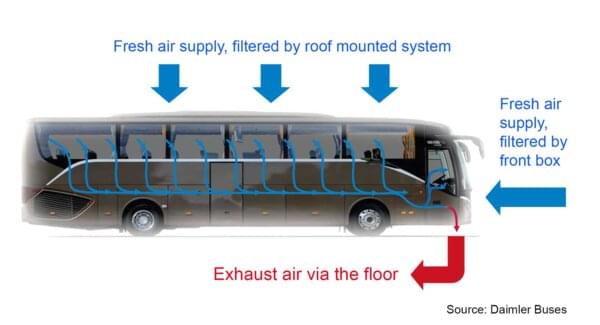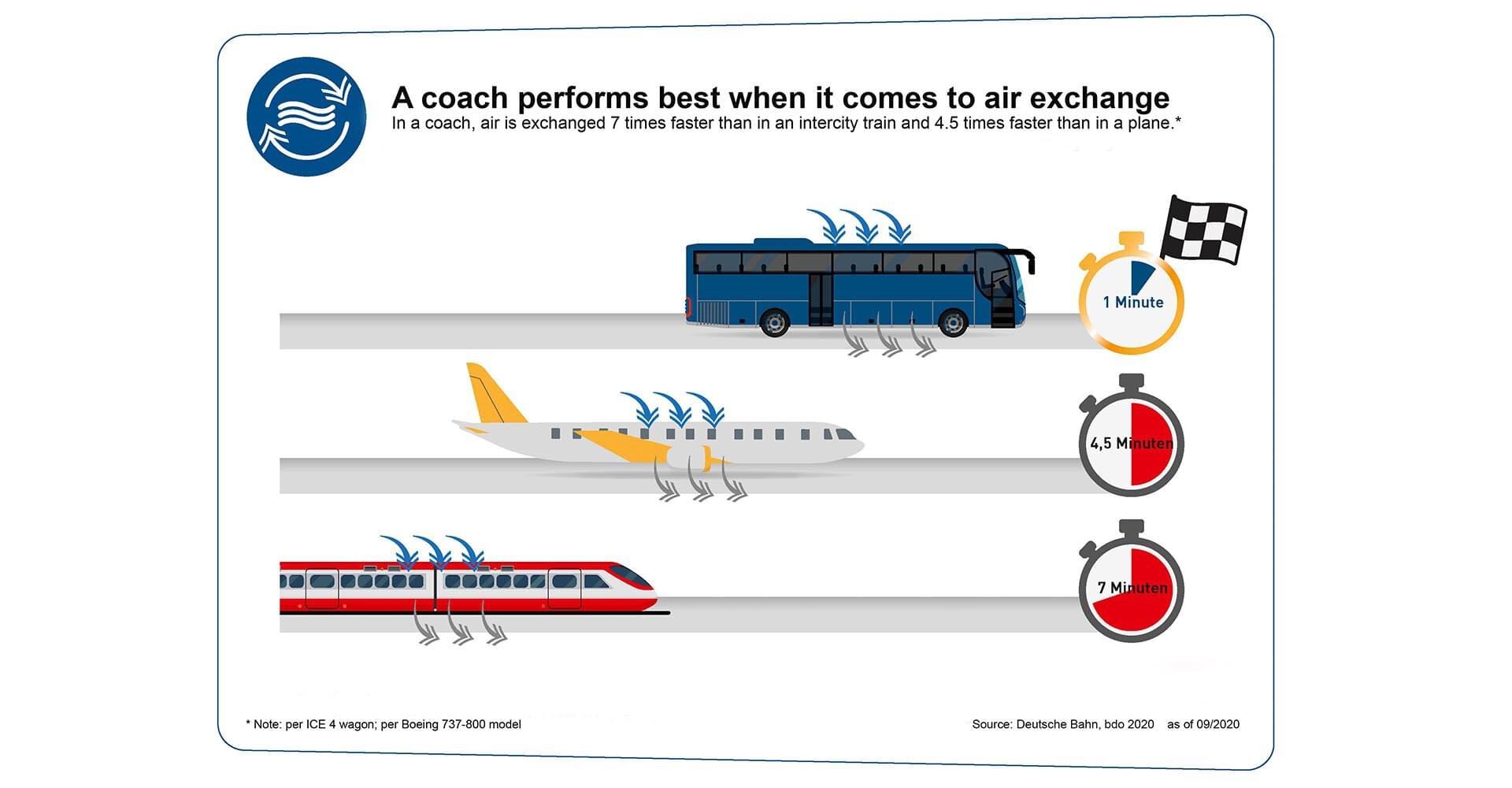Fresh air in the passenger compartment
Spending an extended period of time in a small, poorly or unventilated space can increase the likelihood of the coronavirus being transmitted by aerosols. A continuous supply of fresh air and the rapid exchange of air is therefore extremely important in enclosed spaces.
This diagram shows the exchange of air in various modes of transport; it is much faster in a bus than a train or plane! By this, we don’t mean journey times, but the speed at which air can be exchanged. And incidentally, a bus really does benefit from a supply of fresh air. The same air isn’t just repeatedly recirculated.
Ventilation of passenger compartments
 The passenger compartments in our buses are continuously supplied with fresh air via vents. Air is extracted via the luggage compartment while the bus is moving. A complete air exchange is performed within every one to three minutes.
The passenger compartments in our buses are continuously supplied with fresh air via vents. Air is extracted via the luggage compartment while the bus is moving. A complete air exchange is performed within every one to three minutes.
Air masses of up to 13,000 m3/h are circulated on a double-decker bus. For comparison: A typical detached house with an area of 150 m2 and a ceiling height of 2.5 m has an air volume of 375 m3. In other words, the air volume of up to 35 detached houses flows through a double-decker bus every hour.
Filters ensure additional safety
 The fresh air drawn in from the outside and the circulating air that remains in cooling mode on hot days is cleaned by highly efficient filters. These filter out particles as small as 0.5 micrometers. Droplets that harbour viruses or dust particles on which they adhere can therefore be captured and filtered. The filters are replaced at least every six months.
The fresh air drawn in from the outside and the circulating air that remains in cooling mode on hot days is cleaned by highly efficient filters. These filter out particles as small as 0.5 micrometers. Droplets that harbour viruses or dust particles on which they adhere can therefore be captured and filtered. The filters are replaced at least every six months.
This video clip demonstrates how effective the permanent exchange of air in the bus is using air conditioning.
